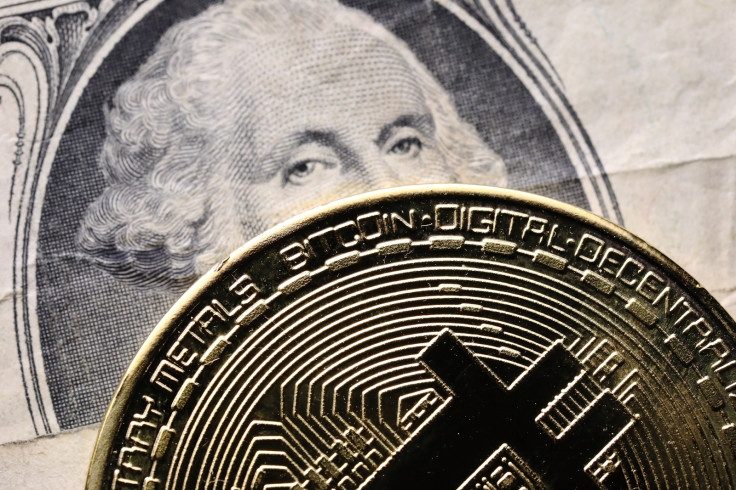Crypto's missing pieces: Building a sustainable financial ecosystem
Robert Leshner, CEO, Compound, asks where are the crypto money markets?

Cryptocurrencies and blockchain assets are rapidly becoming liquid, transparent, and mainstream, and the foundation is being laid for an ecosystem of financial services & products, based on the ability to easily trade.
But as the ecosystem grows, and some people become hilariously rich while real-world usage of cryptocurrencies, lags behind, it's easy to wonder what we're supposed to do with our blockchain assets.
For the most part, assets languish on exchanges, in wallets, or in the proverbial mattress, yielding nothing. Meanwhile, there are scores of developers and investors with productive or speculative uses for our crypto, who would like to get hilariously rich themselves. Traditionally, this is a solved problem. Money markets, consisting of institutions and dealers in money, for short periods of time, exist to bridge the "usage gap", by creating an interest rate at which market participants exchange the time value and use of assets. Nobody accepts zero percent interest on government currency, but in crypto it's de rigueur. So where are the crypto money markets?
Lending Marketplaces
Lending markets for cryptocurrencies exist, and while they have flaws, they point toward a more efficient future.
Centralized, "off-chain" cryptocurrency exchanges, including Bitfinex and Poloniex, support margin-lending. Although limited to certain customer groups, and a limited number of assets, they generally fit the definition of money markets. The downside is that investors have to trust that the exchange won't get hacked or abscond with assets. That's a big risk. The recent $530 million heist from the Japanese exchange, Coincheck, isn't likely to be the last, and many customers feel that the incremental returns aren't worth the risk. That may change as exchanges move toward adoption by the existing financial system.
Peer to peer lending protocols, including ETHLend and Lendroid, eliminate the risk of centralization by allowing users to lend to each other directly. But to an outside observer, they hardly resemble money markets with a uniform interest rate. Instead, they are a patchwork of loan terms, preferences, and interactions, even for the same blockchain asset. And decentralization introduces a number of frictions, coordination problems, and risks -- borne by the users, who are required to manage the loan lifecycle themselves. Digital transformation, in fact the entire idea of cryptocurrencies, is all about reducing friction—not creating it.
Borrowing From the Past
Money markets for cryptocurrencies will unlock value for even the smallest of investors and increase the attractiveness of holding blockchain assets, but first, blockchain has to learn a thing or two from existing financial markets.
First, markets have to be usable (by both humans, and machines) in order to attract capital. Earning a return on your government currency, in liquid money markets, is so easy that you're doing it right now, without realizing it. The businesses and mutual funds that you invest in sweep their cash into money markets, too. And don't forget the banks. At this point, the monetization of cash is simply automatic because the financial infrastructure has been built and improved over generations. Crypto just isn't there yet.
Second, money markets have to be extremely liquid, and fungible. As it currently stands, both exchange margin-lending and peer to peer protocols present a big drawback for investors: funds get matched to specific loans. That reduces an investor's liquidity, making funds unavailable until loans mature. In crypto, liquidity is the name of the game. When asset prices move so rapidly, investors want to be prepared for anything; they don't want to be locked into loans of arbitrary maturity.
Finally, interest rates, for a fungible asset, have to be generally uniform. When two investors lend a currency, with the same duration and risk profile, they should receive approximately the same return. Anything less is a sign that the market is fundamentally broken. The more stable and predictable an interest rate, the more useful borrowing becomes, and novel economic use-cases can be created.
Increasing attractiveness of blockchain assets
With a true money market solution, earning interest on crypto will be as attractive, and as widespread, as earning interest on government currency.
Currently, crypto assets have a negative yield, resulting from significant storage costs and risks, both on and off exchange, without natural interest rates to offset those costs. This contributes to volatility, because holding is disincentivized. The limited nature of current cryptocurrency borrowing mechanics also contribute to mis-priced assets, such as "scamcoins," with unfathomable valuations because there's no way to short them. Perhaps more importantly, opportunity is being lost because of the limits of today's borrowing and lending cryptocurrency options.
Proper money markets will create a safe, positive-yield approach to storing crypto assets. As they currently do for government currency, money markets for cryptocurrencies will bridge the divide between people with a surplus of money (invested in cryptocurrencies) and those with productive uses and investments for that money. When every blockchain asset is borrowable, investors will share a larger economic pie.
######
Compound recently released a prototype of an Ethereum protocol that establishes money markets for blockchain assets, with algorithmically optimized interest rates. In addition to being Compound's CEO, Leshner is a Chartered Financial Analyst and co-chair of San Francisco's Revenue Bond Oversight Committee.





















